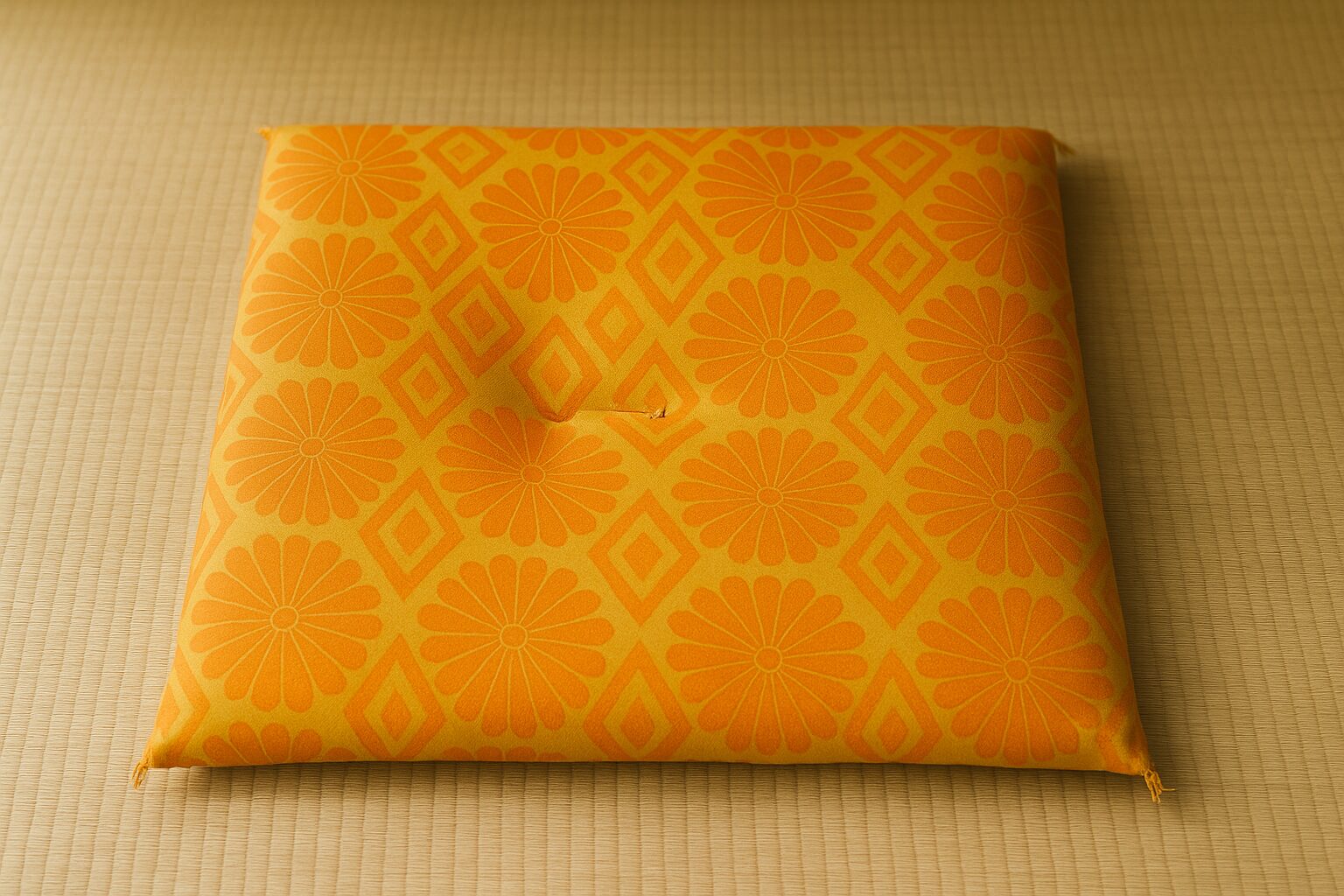By Kokoro Still
After the room grows quiet, a zabuton keeps a shallow trace—
warmth softening by degrees, fabric remembering where someone sat.
In that gentle depression,
even stillness seems to hold its breath.
A zabuton (座布団) is a flat, square cushion commonly used in Japan.
Traditionally placed on tatami, it is filled with cotton and provides comfort while marking one’s seat.
Offering a zabuton to a guest expresses quiet respect and hospitality.
After the Guest’s Departure
The sliding panel closed with a muted glide.
The air inside was still warmer than the hallway,
and a faint scent of green tea lingered.
The guest’s shadow was already gone,
yet the room still carried the outline of their stay.
Around the low table, the zabuton lay in place.
On one of them, a faint depression still lingered,
as if the fabric remembered the trace of warmth.
On the table, a teacup remained,
its fading fragrance blending into the room’s air.
Quiet Gestures of Respect
Adjusting the cushion’s angle—
a small gesture that completes the welcome,
lingering after the guest has gone.
The low table bore its quiet marks:
a teacup awaiting to be cleared.
Sunlight, filtered through the shoji,
lay in pale rectangles across the tatami.
Among them, one zabuton still carried a faint depression,
shaping the air around it
like a square of waiting silence.
Seasons Woven in Fabric
The brush of cloth against tatami—
a sound no louder than a breath,
yet it lingers in the pause of the room.
In summer, its presence can weigh upon the heat;
in winter, it holds a trace of warmth.
Shadows gather at its seams,
measuring the calm that rests between moments.
Night’s Weight on the Zabuton
By evening, the light withdrew,
leaving the zabuton in a pool of shadow.
The mark of sitting was no longer visible,
yet the fabric seemed to keep the weight it had once held.
Some memories are not drawn in sight,
but remain in the hush that follows the day’s close.
When the room falls still, a zabuton remembers just enough to guide us back—
not to the event itself,
but to where Kokoro abides:
in the square trace the cushion leaves behind,
quiet as night gathering upon the tatami.
Featured image: The image was created by AI (ChatGPT)



Comments